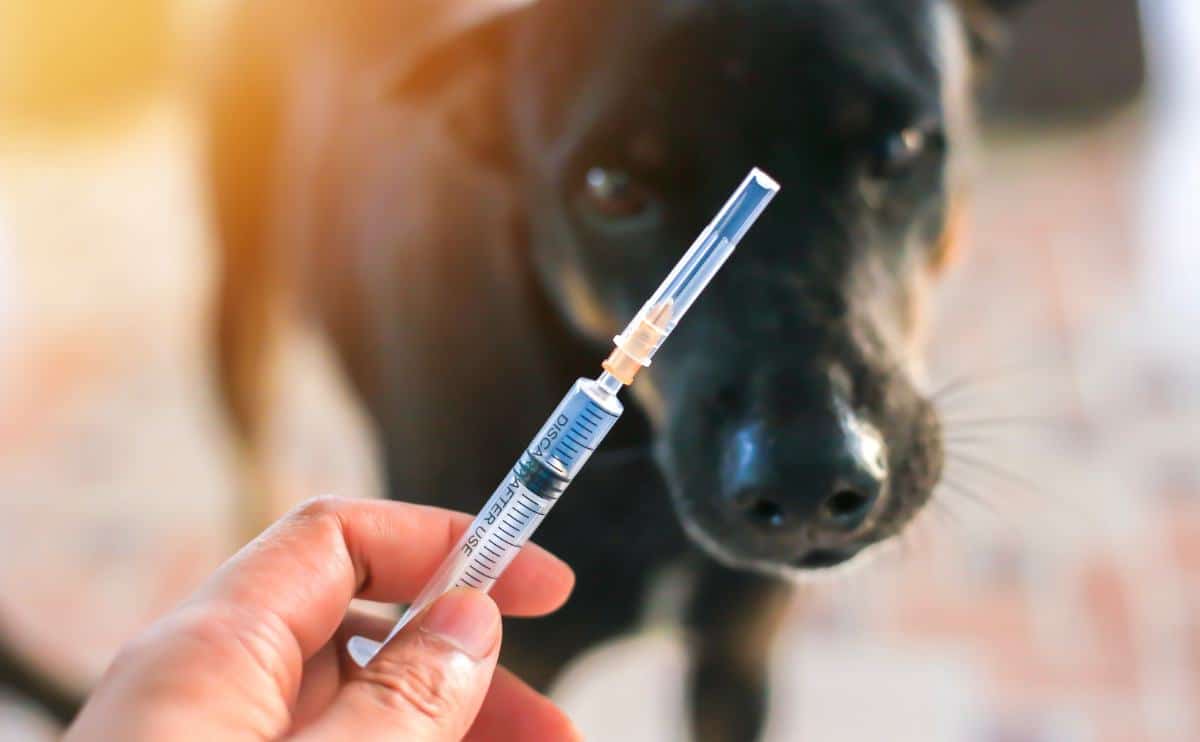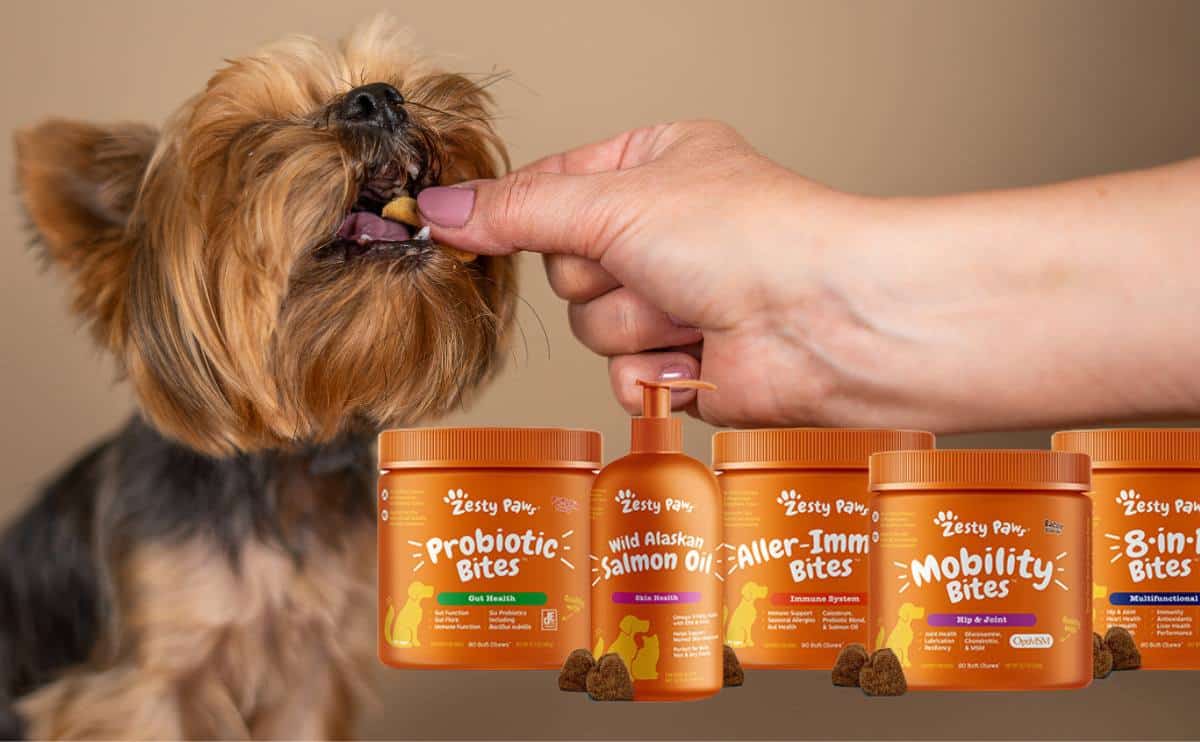Cryptorchidism In Dogs: Causes, Symptoms, Diagnosis & Treatment
When you purchase through links on our site, we may earn a commission. Here’s how it works.
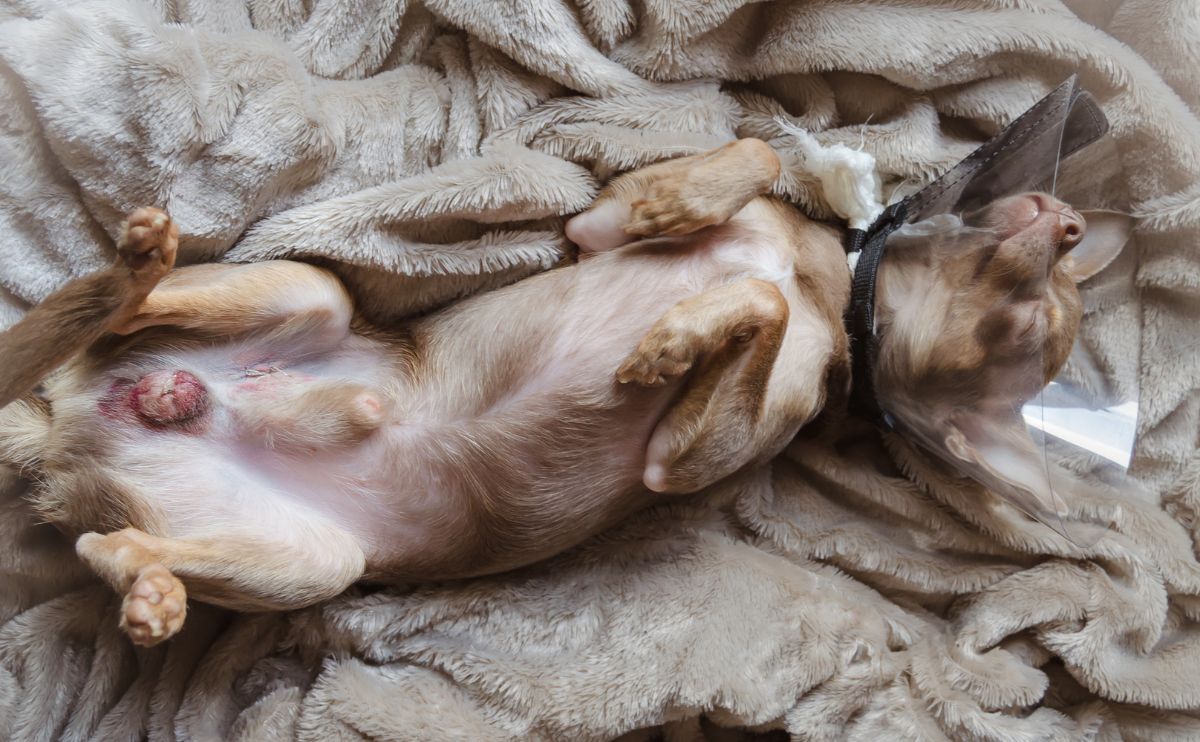
What is cryptorchidism in dogs? Healthy adult male dogs should have two testicles within their scrotum (the protective sac) – unless they have already been castrated! Your pooch’s testicles are usually located outside their body to keep them cool – this keeps them healthy. Some dogs, however, have a condition called cryptorchidism, where they may have only one or no testicles in the scrotum.
Table of Contents
So how does cryptorchidism happen? When a male puppy is born, the testicles (also called testes) are still inside the tummy. As your furry friend grows, their testes descend (or drop) into the scrotum through a small opening in the groin called the ‘inguinal canal.’ This is their final location as an adult. If one or both testicles fail to move into the scrotum, it’s called cryptorchidism. It’s also known as an undescended testicle or retained testicle in dogs.
Why do we worry about cryptorchidism in dogs? Firstly, testicles that are too warm, i.e., inside the abdomen, have an increased risk of becoming cancerous. At higher temperatures, testes won’t produce sperm, so they don’t function normally – although breeding from our precious pup won’t matter to most of us. Finally, when inside the tummy, testicles are very mobile and can twist, causing extreme pain – this is an emergency if it happens.
What Causes Cryptorchidism In Dogs?
The cause of cryptorchidism isn’t precisely known, but it often occurs within the same family of dogs. So, is cryptorchidism genetic in dogs? Your puppy’s genetics are thought to play a part. Because of this, dogs with one or two retained testicles should be castrated (have their testicles surgically removed) and not be bred from.
Any dog can have cryptorchidism, but some breeds, especially small breeds, are more at risk, such as:
- Yorkshire terrier
- Toy poodle
- Cairn Terrier
- Maltese terrier
- English bulldog
- Pomeranian
- Chihuahua
- Miniature schnauzer
- Siberian husky
- Boxer
- Dachshund
How Common Is Cryptorchidism In Dogs?
Cryptorchidism is frequently seen in dogs, especially as those at the most significant risk are popular pet breeds. There’s no exact figure, but it’s suggested anywhere between 1-14% of the doggy population could have the problem.
Cryptorchidism In Dogs Symptoms
You’re only likely to see symptoms related to cryptorchidism if they’re not diagnosed young – most dogs have this problem detected long before issues occur. The more critical consequences of testicles not dropping in dogs are torsions (twists) and tumors.
The main symptom of testicular torsion is extreme abdominal pain. Your dog might also be:
- Lethargic
- Have increased drinking
- Vomiting
Testicular tumors (cancer) are more common than a twist, and dogs with retained testicles (one or two) have a higher chance of having cancer of the testicle. Testes with a tumor often change shape and consistency. But if it’s inside the tummy, this can be missed – there are usually no other symptoms early on. Some types of testicular tumors in the late stages might cause:
- Lethargy
- Problems toileting
- Poor appetite
- Changes in drinking (less or more)
- Vomiting
- Weight loss
- Female behaviors
Finally, if a dog used for breeding is a cryptorchid, he might not be fertile – so he won’t produce puppies. This is in dogs where both testes are inside the tummy.
How To Diagnosis Cryptorchidism
It’s easier to diagnose cryptorchidism if you have a puppy because you can check the scrotum early in his life. So, when do puppies’ testicles drop? We expect your puppy to have two testicles in their scrotum by the time they are six months old. You can usually feel them, but if you’re unsure, get your fur baby checked by your veterinarian. They can typically diagnose this with a clinical examination.
Bilateral cryptorchidism in dogs means both testicles are affected, so none are felt in the scrotum. Unilateral cryptorchidism in dogs means one testicle is in the scrotum, and the other is undescended. The testicle that hasn’t dropped is in the tummy or the groin – if it’s in the groin, your vet can sometimes feel it here.
Rarely, we might have an adult dog with no history of being castrated. This is more likely to happen in dogs that have been rehomed. Most of these dogs probably have had their testicles removed, so on examination won’t have any in the scrotum.
A blood test can check for hormones produced by the testicles to see if they are in the abdomen – this is the most accurate way of checking. X-rays and ultrasound might help too, but it can be a more tricky test.
Cryptorchidism Treatment In Dogs
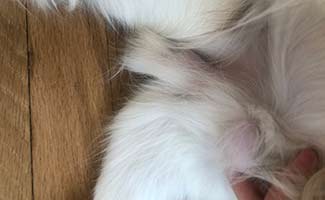
If you suspect your puppy has cryptorchidism, you might wonder how to make a dog’s testicles drop. Unfortunately, there isn’t anything you can do to encourage your dog’s testicles to drop. They should move naturally into the scrotum before your pup is six months old. You’ll need to see your vet to get treatment if they don’t.
What Are The Treatments For Cryptorchidism?
Dogs diagnosed with unilateral or bilateral retained testicles need surgery – called castration or neutering. Both testicles are removed even if one is in the expected location of the scrotum. Any retained can cause problems, and the normal one should be removed to stop the dog from having pups and passing on the issue.
What Happens During Surgery If My Dog Has Cryptorchidism?
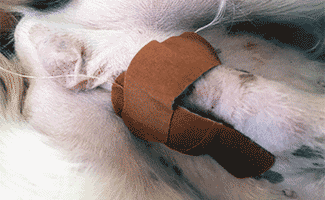
First, the testicles must be located – are there any in the scrotum? In the groin? Or in the abdomen? The complexity of the surgery depends on where your puppy’s testicles are found.
In routine surgical castration, testicles are removed through a small cut in the skin in front of the scrotum. So, a dog with one retained testicle has their normal testicle removed this way. Then, the abnormally located testicle is surgically removed through a second incision in the groin or the tummy.
Bilateral cryptorchid dog surgery could take longer as both testicles must be located individually. They might be in the tummy or the groin. It’s more invasive to remove testicles from the belly than the groin – as a more extensive cut needs to be made. This could mean your pup’s recovery from surgery is more prolonged.
Any incisions made during cryptorchid surgery are stitched closed; there might be one or two, depending on where your dog’s testicles are sitting. Their wounds then need managing after surgery. Follow your veterinary clinic’s advice closely to ensure a swift and healthy recovery.
Cryptorchidism In Dogs Surgery Cost
Surgery to remove testicles that are retained costs more than a routine castration. It varies depending on where they are found, as the surgery time and difficulty differ in unilateral and bilateral cryptorchid dogs. It’s likely to cost several hundred dollars – but you’re best getting an estimate from your veterinary clinic as prices won’t be the same from one to another.
Is Cryptorchidism In Dogs Covered By Insurance?
Cryptorchidism is classed as a medical condition that requires treatment with surgery. Pet insurance companies should recognize this so they may cover treatment costs. Insurance policies differ, so call them to check if your policy covers cryptorchidism.
Most insurance won’t cover conditions diagnosed before the policy was bought or during the waiting period. Cryptorchidism is usually diagnosed after your canine is six months old. So if you purchase a policy for your puppy as young as possible, you’re more likely to have coverage for the condition before diagnosis.
What’s The Prognosis If My Dog Has Cryptorchidism?
The prognosis is excellent if you get an early diagnosis and treatment for cryptorchidism. Young, healthy dogs generally recover well from surgery – the only cure.
If missed, cryptorchidism can have severe consequences as your dog ages. Torsions are an emergency and can cause extreme pain, shock, and death. Cancer of the testicles can also be life-threatening, mainly if it spreads to other parts of your dog’s body.
Once you get a new puppy, take them for a health check at six months of age so that this condition can be picked up at the earliest opportunity. Once treated, your pup can live a happy and healthy life.
